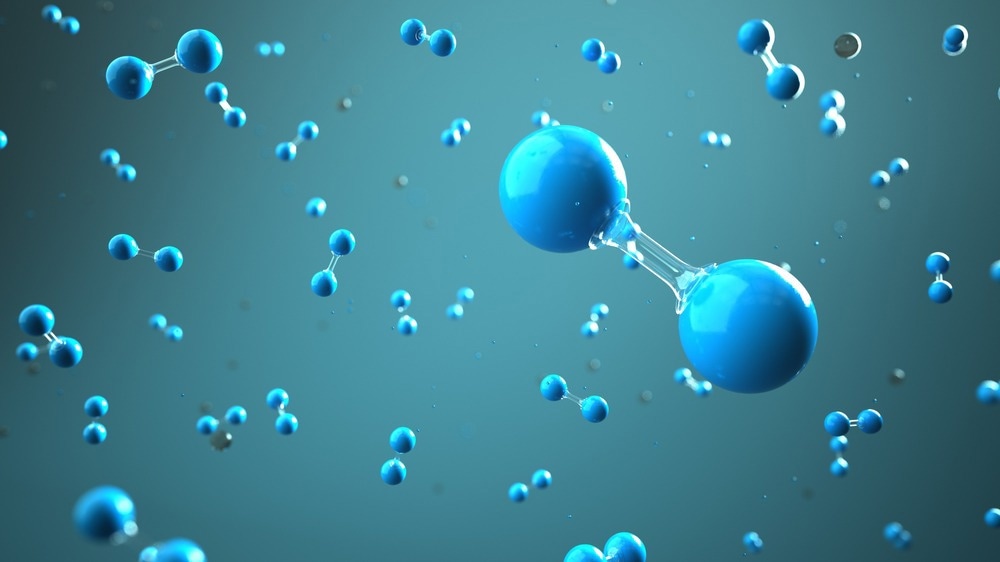In a recent article published in Advanced Science, researchers demonstrated that interfacing Ni with CeO₂ significantly enhances electrocatalytic performance for hydrogen evolution reactions (HER). By leveraging interfacial electronic effects and charge transfer, the study achieved improved stability and efficiency in long-term water electrolysis.

Image Credit: Alexander Limback/Shutterstock.com
Background
Nickel-based catalysts have long been studied due to their moderate catalytic activity and cost-effectiveness. However, their practical application - especially in alkaline environments - is often limited by stability issues and weak electronic interactions with the electrolyte.
Prior research has shown that combining nickel with oxide nanostructures such as ceria (CeO₂) can significantly enhance its electronic properties, improving overall catalytic performance.
The interface formed between Ni and CeO₂ is particularly promising, as it facilitates better electron transfer and interfacial dynamics that accelerate hydrogen evolution reactions (HER).
Given the push to apply such catalysts in real-world settings, including wastewater electrolysis where impurities are present, it is increasingly important to understand how interfacial effects influence performance, durability, and underlying reaction mechanisms. This sets the stage for designing catalysts with tailored atomic-level interfaces to boost efficiency and resilience.
The Current Study
This study synthesized a Ni-CeO₂/Carbon (NCC) catalyst through a carefully controlled process to maximize the interfacial contact between nickel and ceria.
To characterize the interface at the atomic level, the team used high-resolution transmission electron microscopy (HR-TEM), high-angle annular dark-field (HAADF) imaging, energy-dispersive X-ray spectroscopy (EDS), and electron energy loss spectroscopy (EELS). These techniques confirmed the formation of a well-defined, coherent interface between the Ni and CeO₂ domains.
To probe the electronic interactions at play, density functional theory (DFT) calculations were performed. These simulations revealed charge transfer effects and electronic structure changes directly attributed to CeO₂ integration.
The electrochemical performance was then tested using linear sweep voltammetry (LSV) and long-term durability assessments under practical conditions, specifically in industrial waste alkaline water with a pH of 13.4 and a temperature of 60 °C.
The electrolyzer featured electrodes coated with the NCC catalyst, and performance metrics such as overpotential, current density, and energy efficiency were systematically recorded. Additional analyses using electrochemical impedance spectroscopy (EIS) and surface characterization helped assess interfacial resistance and catalyst stability before and after operation.
Results and Discussion
The results showed that the NCC catalyst significantly outperformed conventional Ni/Carbon (Ni/C) in terms of electrocatalytic activity.
Notably, the charge transfer resistance at the electrode–electrolyte interface was substantially lower, allowing for more efficient electron transport during HER.
Electrochemical testing revealed that the NCC catalyst reached a current density of 1 A/cm² at a cell voltage of just 2.03 V - compared to 2.33 V required by Ni/C under the same conditions - highlighting a meaningful efficiency improvement. DFT calculations confirmed that the Ni–CeO₂ interface modified the electronic environment of nickel, redistributing charge density in a way that promoted catalytic activity.
Durability testing further demonstrated the strength of the NCC design. The catalyst maintained stable performance for over 2000 hours of continuous operation in waste alkaline water, with only a minor voltage increase (~50 mV per 1000 hours) and negligible decline in hydrogen output.
In contrast, Ni/C catalysts showed significant degradation, failing within 240 hours and experiencing a voltage rise of more than 600 mV.
Post-operation surface analysis using X-ray photoelectron spectroscopy (XPS) revealed that the active Ni(OH)₂ phase was preserved in the NCC catalyst, while metallic Ni⁰ - which is more prone to poisoning and corrosion - was almost entirely absent. This resilience to contaminants in wastewater illustrates the protective role of the CeO₂ layer in maintaining catalyst integrity and activity.
Energy efficiency metrics also improved, with reduced energy consumption per kilogram of hydrogen produced - an essential factor for scaling up the process economically and sustainably.
Conclusion
This study highlights the effectiveness of engineering Ni–CeO₂ interfaces to create highly efficient, long-lasting electrocatalysts for hydrogen production in challenging environments such as industrial wastewater.
The NCC catalyst demonstrates improved electron transfer, reduced overpotential, and excellent operational stability, delivering over 2000 hours of steady performance with minimal degradation.
These enhancements, supported by experimental evidence and theoretical modeling, point to interfacial charge transfer and electronic structure tuning as key drivers of catalytic improvement.
This work focuses on interface design, opening new avenues for developing cost-effective, robust catalysts tailored for real-world electrolysis systems.
Source:
Kim N. I., Li J., et al. (2025). Collapsing the Bottleneck by Interfacial Effect of Ni CeO₂ for Long‐Term Hydrogen Production. Advanced Science, e02484. DOI: 10.1002/advs.202502484, https://advanced.onlinelibrary.wiley.com/doi/10.1002/advs.202502484